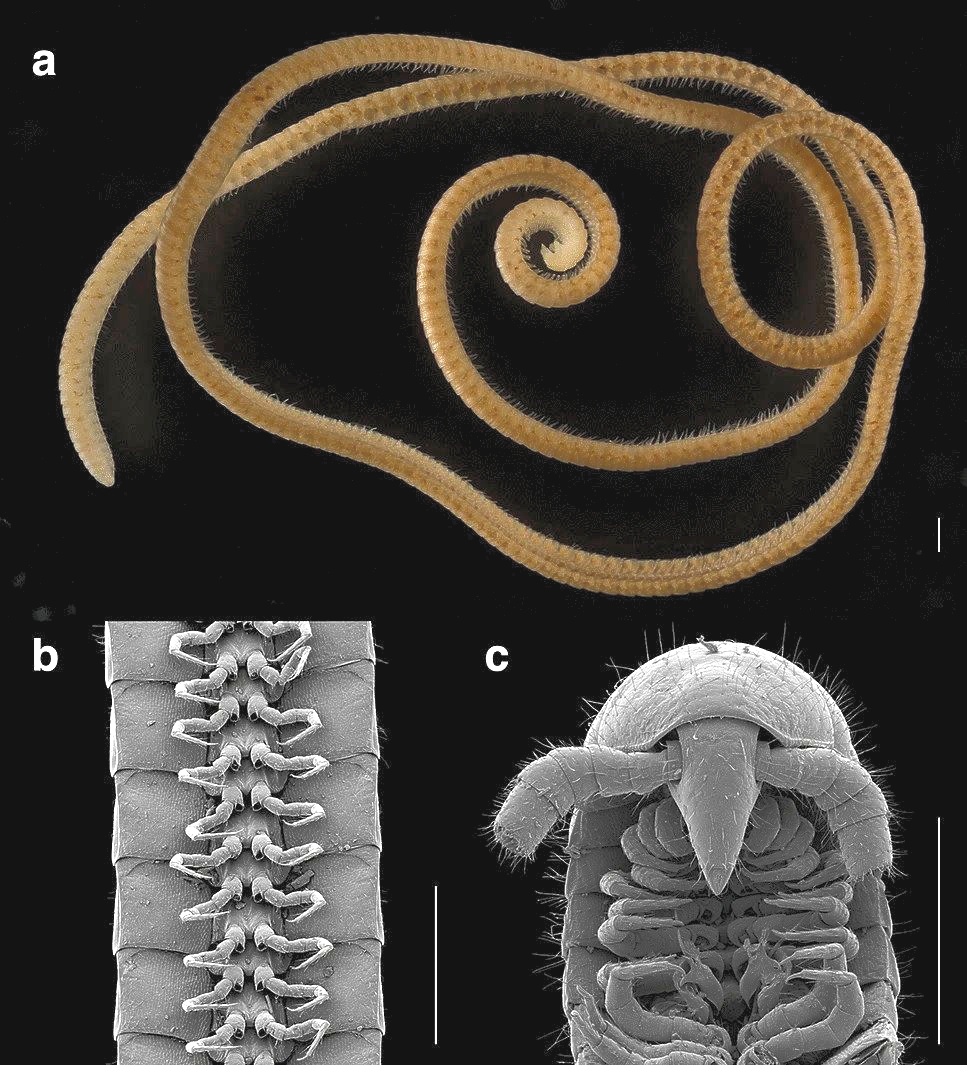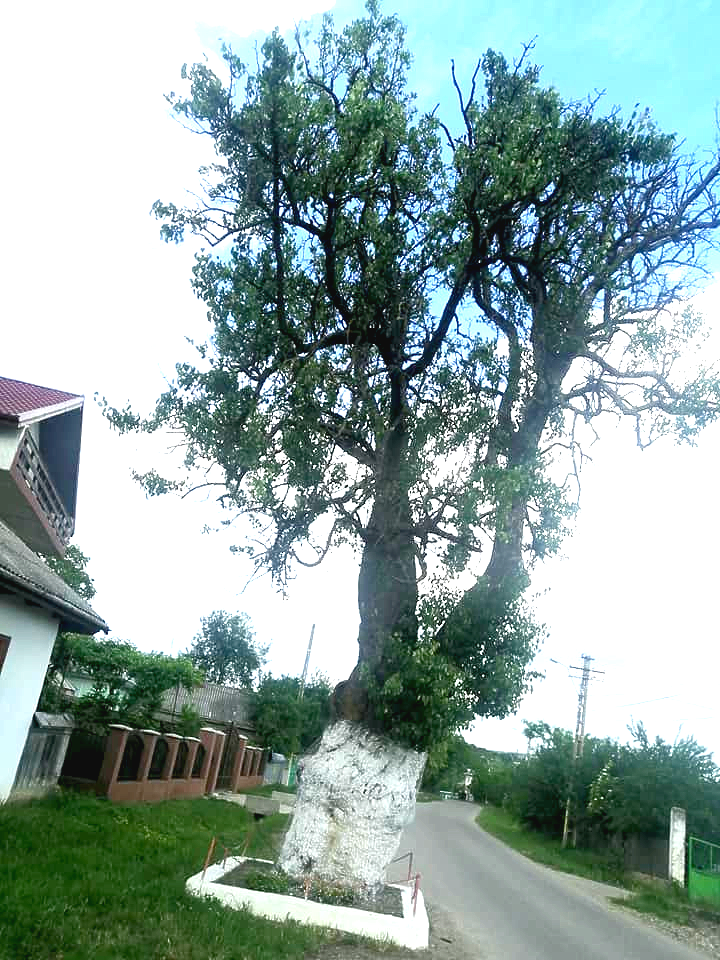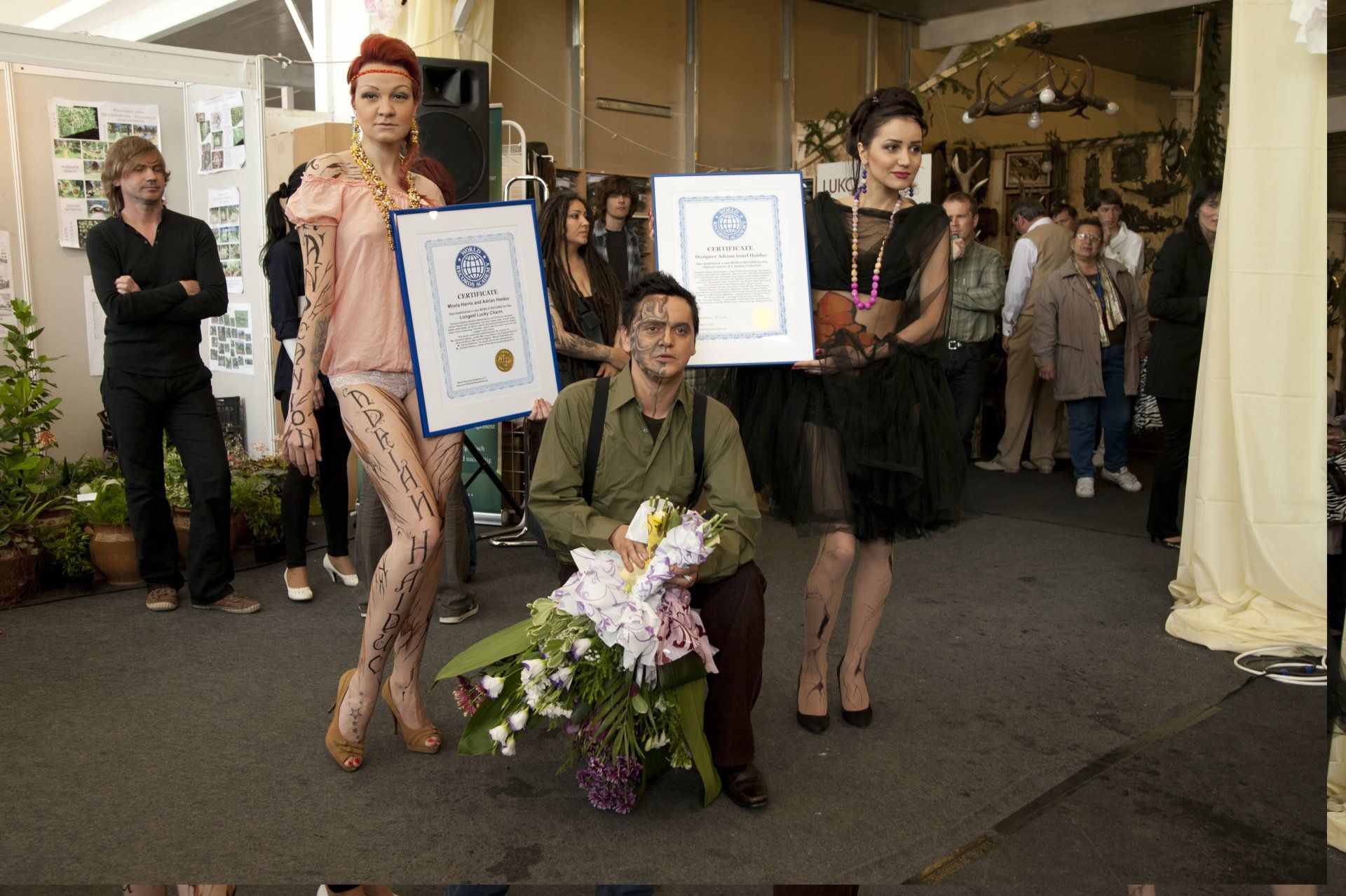First true millipede: Eumillipes persephone sets world record

Goldfields region, Western Australia, Australia--Scientists discovered, in the Goldfields region of Western Australia, a pale, thread-like millipede with 1,306 legs at a depth of 60 m in a drill hole created for mineral exploration; named Eumillipes persephone, it sets the world record for being the World's First true millipede, according to the WORLD RECORD ACADEMY.
Photo above: The leggiest animal on the planet, Eumillipes persephone, from Australia. (A) female with 330 segments and 1,306 legs (paratype specimen, T147124). (B) ventral view of legs (male holotype, T147101). (C) dorsal view of head and ventral view of gonopods (male holotype, T147101). Scale bars, 0.5 mm. Photo Supplied: Paul Marek et al
"[My colleague] was the first one to lay eyes on [the true millipede in the lab], and she was like, 'look, these millipedes are amazing'," said Bruno Buzatto, who works for the environmental consultancy that made the discovery and is also an author on the paper.
Dr Buzatto, who is also affiliated with Macquarie University and the University of Western Australia, said the new species was discovered as part of an environmental impact assessment survey for a proposed mine.

Photo above: Phylogenomic estimation of the evolutionary history of colobognath millipedes. Super-elongation (> 180 segments) is well known from the order Siphonophorida, including Illacme plenipes with 192 segments and 750 legs, but it has independently evolved in the Australian order Polyzoniida with Eumillipes persephone bearing up to 1,306 legs and 330 segments. This feature (dark branches) has evolved between two and four times in diplopods based on a character state reconstruction using parsimony. Maximum likelihood phylogeny of 312 orthologous sequences with Polydesmida, Stemmiulida, Chordeumatida, Spirostreptida, and Sphaerotheriida as outgroup taxa. Julida, Spirobolida, and other diplopod orders omitted from the analysis. Support values on nodes are bootstrap supports. Numbers in parentheses after species names are the maximum segment count for the taxon. Species with super-elongation present denoted in bold. Millipede silhouettes sized relative to one other.
Described for the first time today in a paper published in Scientific Reports, the millipede's body is divided into 330 segments, has a cone-shaped head with "enormous" antennae, a beak, and has lost its eyes and much of its pigment.
It measures about 9.5 centimeters long, by about 1 millimeter across.
When he first saw the true millipede, Dr Buzatto said he was reminded of an earlier research paper he had come across.
"I looked back on that paper and realized that 750 legs was the highest number for the millipede," he said.
"I looked at our millipede and saw at least 800 [legs]."
But most spectacular of all is its generous array of legs, which Dr Buzatto says are thought to aid in locomotion in tight crevices.
"[Millipedes] get longer and have more legs when they're adapted to living underground," he said.
"They're not living in big underground caves, they're living in small fissures — it's quite possible they have more legs to get more traction to move."
Author information
Affiliations
- Virginia Tech, Blacksburg, USA
- Paul E. Marek & Jackson C. Means
- Bennelongia Environmental Consultants, Jolimont, Australia
- Bruno A. Buzatto
- Macquarie University, Sydney, Australia
- Bruno A. Buzatto
- University of Western Australia, Perth, Australia
- Bruno A. Buzatto
- Hampden-Sydney College, Hampden Sydney, USA
- William A. Shear
- La Trobe University, Melbourne, Australia
- Dennis G. Black
- Western Australian Museum, Perth, Australia
- Mark S. Harvey
- Australian National Insect Collection, Canberra, Australia
- Juanita Rodriguez
Acknowledgements
This research was supported by a National Science Foundation grant to PEM (Division of Environmental Biology, Systematics and Biodiversity Sciences, #1916368). Thanks to Charity Hall, Howard Dunleavy, and Bailey Connors for assisting with editing, figure illustration, and specimen measurement. Sergei Golovatch and Henrik Enghoff provided comments on previous versions of the manuscript.
The first true millipede—1306 legs long
- Paul E. Marek,
- Bruno A. Buzatto,
- William A. Shear,
- Jackson C. Means,
- Dennis G. Black,
- Mark S. Harvey &
- Juanita Rodriguez
Marek, P.E., Buzatto, B.A., Shear, W.A. et al. The first true millipede—1306 legs long. Sci Rep11, 23126 (2021). https://doi.org/10.1038/s41598-021-02447-0





